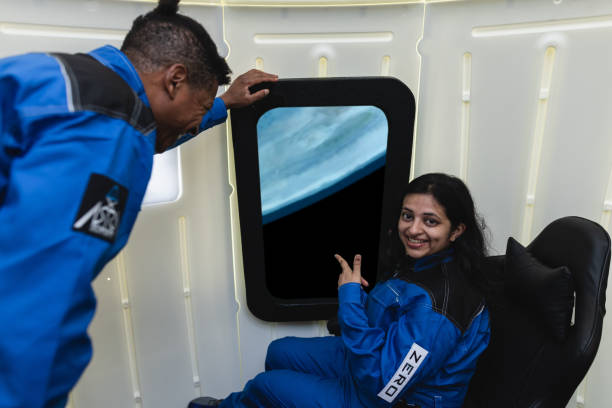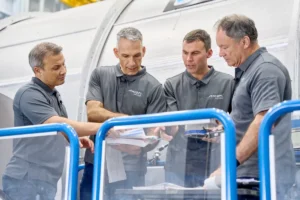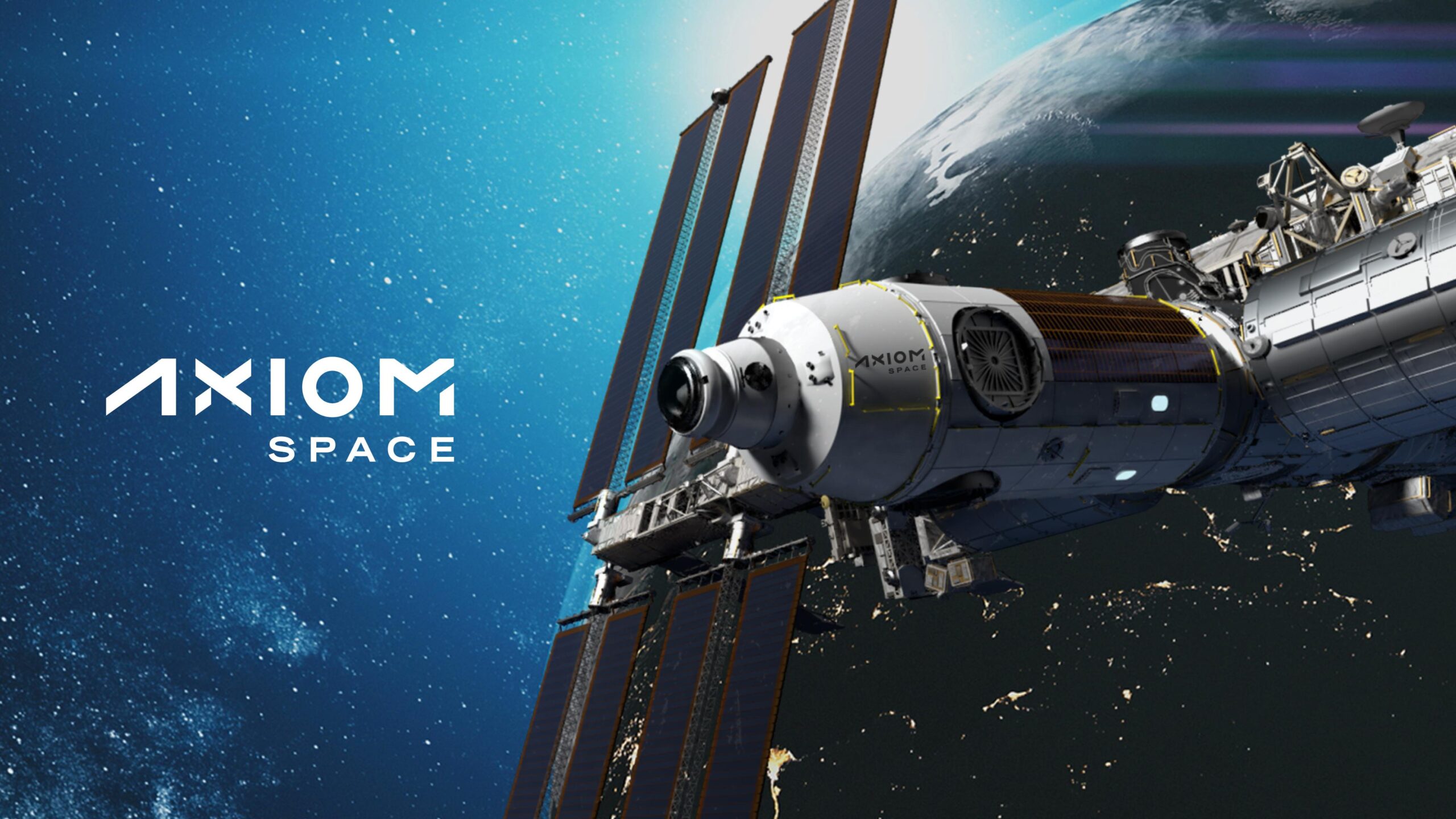The final frontier is open for business. We stand at the precipice of a new era in space exploration, one where space travel isn’t just for governments and astronauts – it’s becoming accessible to ordinary people, businesses, and researchers alike. This monumental shift is being spearheaded by a powerful partnership between NASA, the world’s leading space agency, and Axiom Space, a trailblazing commercial space company.
In this article, we’ll delve into how NASA and Axiom Space are working together to make commercial space travel a reality, explore the groundbreaking technologies they’re developing, and discuss the implications of this new frontier for our future. We’ll also explore the evolution of commercial space travel, NASA’s pivotal role, Axiom Space’s ambitious plans, and the transformative potential of their collaboration.
The Evolution of Commercial Space Travel

History of Commercial Space Travel
Commercial space travel has a rich history, marked by visionary pioneers and technological breakthroughs. The journey began in the 1980s with private companies like Space Services Inc., which launched the first privately funded rocket, Conestoga 1, in 1982. The commercial space race gained momentum in the early 2000s with the advent of companies such as SpaceX, founded by Elon Musk, and Blue Origin, established by Jeff Bezos. These companies achieved significant milestones, including SpaceX’s successful launch and recovery of reusable rockets, which drastically reduced the cost of space missions.
Role of Private Companies
Private companies have played a crucial role in advancing space exploration. Their innovative approaches and competitive spirit have led to rapid advancements in rocket technology, satellite deployment, and space tourism. By pushing the boundaries of what’s possible, they have paved the way for a new era where space travel is not confined to government agencies but is accessible to commercial entities and individuals.
NASA’s Pioneering Role in Space Exploration
NASA Space Exploration
Since its inception in 1958, NASA has been a trailblazer in space exploration. The agency’s achievements include the Apollo moon landings, the Space Shuttle program, and the construction of the International Space Station (ISS). NASA’s missions have expanded our understanding of the universe and provided invaluable data for scientific research.
Transition to Commercial Partnerships
In recent years, NASA has transitioned from being the sole operator of space missions to fostering partnerships with private companies. This shift was driven by the need to reduce costs and encourage innovation. Programs like the Commercial Crew Program, which contracts companies such as SpaceX and Boeing to transport astronauts to the ISS, exemplify this new approach. By collaborating with private entities, NASA leverages their expertise and resources to achieve its goals more efficiently.
Introduction to Axiom Space
Axiom Space Company Profile
Founded in 2016 by Michael Suffredini and Kam Ghaffarian, Axiom Space is dedicated to creating the world’s first commercial space station. Suffredini, a former ISS program manager, brings a wealth of experience to the venture. Axiom’s mission is to make space travel more accessible, facilitating scientific research, manufacturing, and even space tourism.
Vision and Objectives
Axiom Space aims to build a sustainable and commercially viable space infrastructure. Their vision includes providing habitats for astronauts, researchers, and tourists, as well as offering services like space manufacturing and satellite deployment. Axiom’s ultimate goal is to democratize access to space, transforming it into a bustling hub of economic and scientific activity.
Axiom’s Private Astronaut Missions to the ISS

Axiom Space is making history by offering private citizens the opportunity to experience the awe-inspiring journey to the International Space Station (ISS). These Private Astronaut Missions (PAM) are not just luxury space tourism; they’re a critical step towards democratizing space travel. By enabling private individuals to conduct research, experience microgravity, and witness the Earth from a unique vantage point, Axiom is paving the way for a future where space is accessible to all.
NASA and Axiom Space Collaboration
In January 2020, NASA selected Axiom Space to attach its commercial modules to the ISS. This partnership is a cornerstone of NASA’s strategy to enable a thriving commercial market in low Earth orbit (LEO). Axiom’s modules will initially be connected to the ISS but will eventually detach to form an independent commercial space station, ensuring a continuous U.S. presence in space post-ISS.
Objectives and Goals
The collaboration aims to:
- Sustain human activities in LEO after the ISS is decommissioned.
- Encourage innovation in space technologies and operations.
- Create new economic opportunities and markets in space.
Key Milestones
- 2024: Axiom Space plans to launch its first module, named Axiom Hab One, to the ISS. The module will be attached to the ISS and will eventually detach to form an independent commercial space station.
- 2026: Axiom Hab One is expected to attach to the ISS.
- 2028: Axiom’s modules are expected to become a fully operational, standalone commercial space station, marking a significant leap forward in commercial space travel.
The collaboration is a cornerstone of NASA’s strategy to enable a thriving commercial market in low Earth orbit (LEO). The commercial space station will be a state-of-the-art facility designed to support a variety of activities, from scientific research to space tourism. The station will feature cutting-edge technology, modular habitats, and laboratories equipped for microgravity research and manufacturing.
Benefits of the NASA-Axiom Partnership

Sustainability of Human Activities in Low Earth Orbit
The partnership between NASA and Axiom ensures the sustainability of human activities in LEO. By establishing a commercial space station, they provide a platform for continuous scientific research, technology development, and international cooperation in space.
Innovation in Space Technologies
Collaborating with Axiom allows NASA to leverage the company’s innovative approaches and technologies. This synergy fosters the development of new capabilities and solutions that can be applied to future space missions, including those targeting Mars and beyond.
Economic Opportunities
The commercialization of space opens up new markets and economic opportunities. Axiom’s space station will serve as a hub for various industries, including research, manufacturing, and tourism. This diversification stimulates economic growth and creates new jobs, both in space and on Earth.
Future Prospects of Commercial Space Travel
Space Tourism
One of the most exciting prospects of commercial space travel is space tourism. Companies like Axiom Space are working to make space accessible to private individuals, offering once-in-a-lifetime experiences. Space tourists will have the opportunity to live and work in space, experiencing the unique environment of microgravity and the breathtaking views of Earth from orbit.
Research and Development
The microgravity environment of space offers unique opportunities for scientific research and development. Experiments conducted in space can lead to breakthroughs in fields such as medicine, materials science, and biotechnology. Axiom’s space station will provide a platform for researchers to conduct cutting-edge experiments that are not possible on Earth.
Manufacturing in Space
Manufacturing in space holds immense potential for producing high-quality products that are difficult or impossible to create on Earth. The absence of gravity allows for the development of new materials and products with superior properties. Axiom’s commercial space station will facilitate space-based manufacturing, opening up new possibilities for innovation and economic growth.
Conclusion
The partnership between NASA and Axiom Space is a game-changer for commercial space travel, marking the beginning of a new era in space exploration. By leveraging their combined expertise and resources, they are making space more accessible and commercially viable. This collaboration promises to open up new frontiers for research, innovation, and economic growth, ensuring a sustainable human presence in space for years to come.
Stay informed about the latest developments in commercial space travel by following NASA and Axiom Space. Share this article with others who are interested in the future of space exploration, and join the conversation in the comments section. Together, we can witness the dawn of a new era where space travel is within reach for all.
Frequently Asked Questions (FAQs)
What is commercial space travel?
Commercial space travel refers to space missions conducted by private companies for profit. These missions can include satellite launches, space tourism, and the development of space infrastructure such as commercial space stations.
How does the NASA-Axiom partnership impact space exploration?
The partnership accelerates the commercialization of space, fostering innovation and economic growth. It ensures the sustainability of human activities in low Earth orbit and provides a platform for scientific research and technological development.
When will Axiom Space’s commercial space station be operational?
Axiom plans to launch its first module in 2024, with the full commercial space station expected to be operational by 2028.
What are the benefits of a commercial space station?
A commercial space station offers numerous benefits, including continuous human presence in space, opportunities for scientific research and manufacturing, and the development of new markets and economic opportunities.
How can private individuals participate in space tourism?
Private individuals can participate in space tourism through companies like Axiom Space, which offer spaceflight experiences and stays on commercial space stations. These opportunities provide a unique chance to experience life in space and contribute to scientific research.
